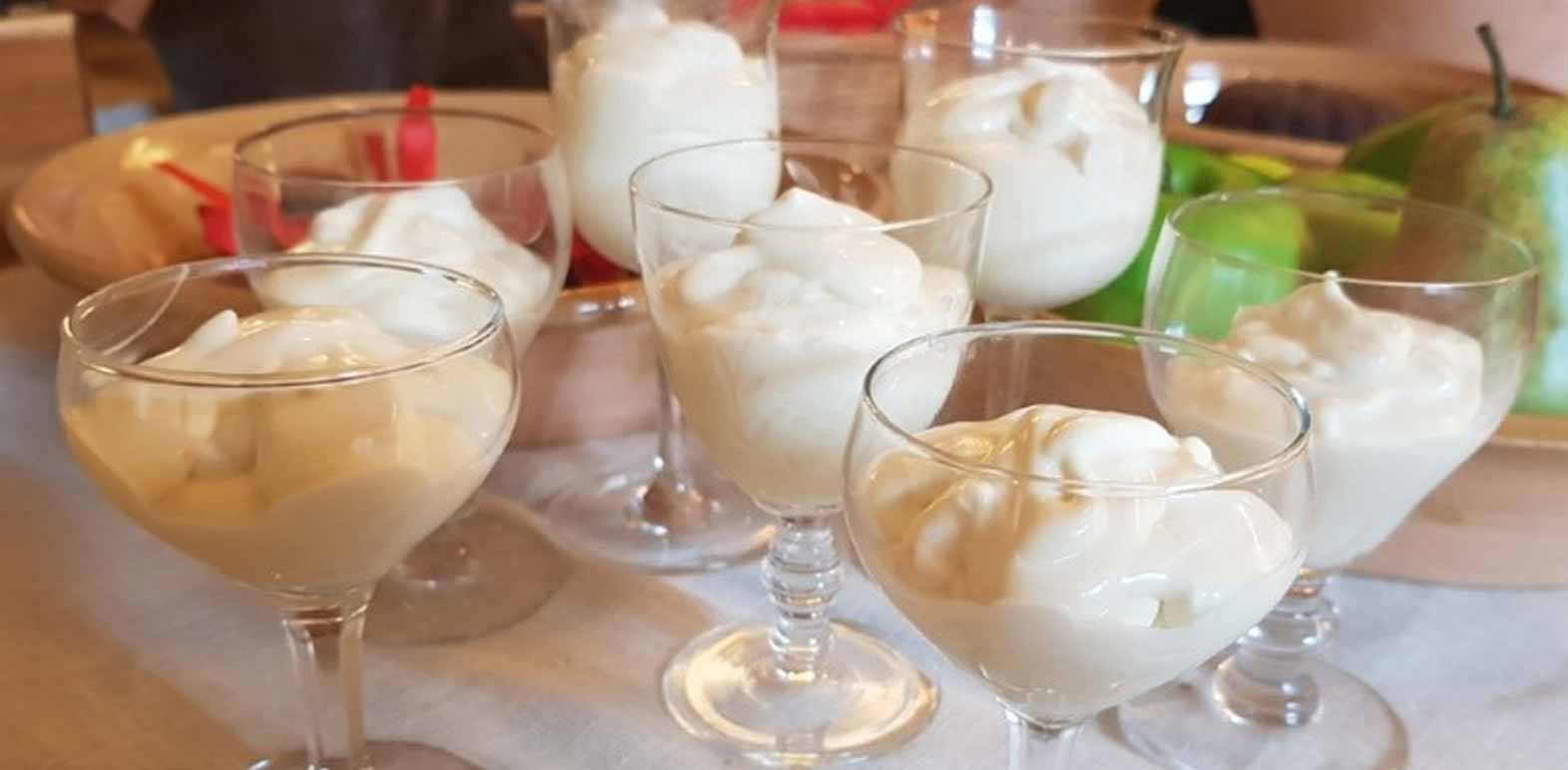18th Century ice cream
18th Century ice cream

Ingredients for the ice cream
For the flavouring
Method
Ice cream first made its way to England in the late 1600s, but became a popular and fashionable dish in the 18th century, when the Mansion House was first built.
Italian and French confectioners set up shops in various cities selling ices in much the same way that you can obtain an ice cream almost anywhere in York city centre during the summer! The first recipes appeared in cookbooks written by confectioners, and some books contain up to thirty-two different recipes for ice cream, including flavours such as Parmesan and bergamot water! The recipe we use in our kitchen comes from Hannah Glasse’s The Art of Cookery, a powerhouse of kitchen knowledge and the most popular book of the age, likely gracing many of the homes of the people who would have lived and worked in the Mansion House over the years.
Pare and stone twelve ripe apricots, and scald them, beat them fine in a mortar, add to them six ounces of double-refined sugar, and a pint of scalding cream, and work it through a sieve; put it in a tin with a close cover, and set it in a tub of ice broken small, with four handfuls of salt mixed among the ice. When you see your cream grows thick round the edges of your tin, stir it well, and put it in again till it is quite thick; when the cream is all froze up, take it out of the tin, and put it into the mould you intend to turn it out of; put on the lid, and have another tub of salt and ice ready as before; put the mould in the middle, and lay the ice under and over it, let it stand four hours, and never turn it out till the moment you want it, then dip the mould in cold spring-water, and turn it into a plate. You may do any sort of fruit the same way.’
Hannah Glasse, The Art of Cookery, 1774
You may notice that this excerpt from Hannah Glasse is very light on the actual ice cream recipe and mostly concerns the freezing process! Nowadays, a home-made ice cream recipe will usually just finish with an instruction to put the ice cream into a tub in your freezer. Before refrigeration, ice cream makers had to be a little more inventive.
Ice cream was often placed in a metal tin - milk pails could be employed for this purpose - and suspended in another container filled with ice in a cool part of your house.
Ice was a roaring trade, and was often imported from colder countries, especially Scandinavia. Local ice could be collected after a winter freeze by harvesting from rivers and storing in underground facilities known as icehouses. Often temporary icehouses were dug and filled in depending on the demand for storing ice.
Many grand houses would have a permanent icehouse on the grounds, and such a structure probably existed in the Mansion House grounds, in the yard between the house and the Guildhall where there is some evidence that a garden and buildings such as a bakehouse also stood. Having a permanent icehouse on the premises would have meant that ice cream could be safely stored there to freeze and brought out just before a meal in the Dining Room or the grand State Room.
An example of a Georgian icehouse can still be seen today just inside the York city walls near Monk Bar.
Desserts such as ice cream were definitely a treat in the eighteenth century, and grand houses and entertainment venues like the Mansion House would have used ice cream as part of the dessert course in a summer menu to impress and pamper their guests.
In our Silver Galleries, we have on display an entire silver dessert service including special cutlery and dishes for serving the dessert course. Undoubtedly, this would have been used for ice cream many times while the Lord Mayors of the eighteenth century entertained.
Why not experiment with other flavours, both modern and Georgian?
If you’ve tried our recipe, please send us photos of your creations and we'll post them on our website!
